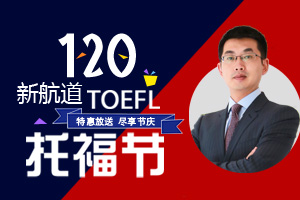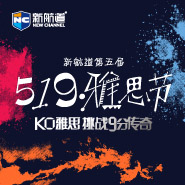托福阅读材料之莫尔斯电码Samuel Morse
2013-12-09 17:30 供稿单位: 新航道
出国英语考试有哪些 雅思6.5是什么水平 雅思阅读评分标准 托福阅读评分标准 雅思和托福的区别
Samuel Finley Breese Morse (27 April 1791 – 2 April 1872) was an American contributor to the invention of a single-wire telegraph system based on European telegraphs, co-inventor of the Morse code, and a painter of historic scenes.
Telegraph
In 1825, the city of New York commissioned Morse for $1,000 to paint a portrait of Gilbert du Motier, marquis de Lafayette, in Washington. In the midst of painting, a horse messenger delivered a letter from his father that read one line, "Your dear wife is convalescent". Morse immediately left Washington for his home at New Haven, leaving the portrait of Lafayette unfinished. By the time he arrived she had already been buried. Heartbroken in the knowledge that for days he was unaware of his wife's failing health and her lonely death, he moved on from painting to pursue a means of rapid long distance communication.
On the sea voyage home in 1832, Morse encountered Charles Thomas Jackson of Boston who was well schooled in electromagnetism. Witnessing various experiments with Jackson's electromagnet, Morse developed the concept of a single-wire telegraph, and The Gallery of the Louvre was set aside. The original Morse telegraph, submitted with his patent application, is part of the collections of the National Museum of American History at the Smithsonian Institution.In time the Morse code would become the primary language of telegraphy in the world, and is still the standard for rhythmic transmission of data.
William Cooke and Professor Charles Wheatstone learned of the Wilhelm Weber and Carl Gau? electromagnetic telegraph in 1833, and reached the stage of launching a commercial telegraph prior to Morse, despite starting later. In England, Cooke became fascinated by electrical telegraph in 1836, four years after Morse, but with greater financial resources. Cooke abandoned his primary subject of anatomy and built a small electrical telegraph within three weeks. Wheatstone also was experimenting with telegraphy and (most importantly) understood that a single large battery would not carry a telegraphic signal over long distances, and that numerous small batteries were far more successful and efficient in this task (Wheatstone was building on the primary research of Joseph Henry, an American physicist). Cooke and Wheatstone formed a partnership and patented the electrical telegraph in May 1837, and within a short time had provided the Great Western Railway with a 13-mile (21 km) stretch of telegraph. However, Cooke and Wheatstone's multiple wire signaling method would be overtaken by Morse's superior method within a few years.
In a letter to a friend, Morse describes how vigorously he fought for being called the sole inventor of the electromagnetic telegraph despite the previous inventions. (1848).
I have been so constantly under the necessity of watching the movements of the most unprincipled set of pirates I have ever known, that all my time has been occupied in defense, in putting evidence into something like legal shape that I am the inventor of the Electro-Magnetic Telegraph!! Would you have believed it ten years ago that a question could be raised on that subject?
Morse encountered the problem of getting a telegraphic signal to carry over more than a few hundred yards of wire. His breakthrough came from the insights of Professor Leonard Gale, who taught chemistry at New York University (a personal friend of Joseph Henry). With Gale's help, Morse soon was able to send a message through ten miles (16 km) of wire. This was the great breakthrough Morse had been seeking. Morse and Gale were soon joined by a young enthusiastic man, Alfred Vail, who had excellent skills, insights and money. Morse's telegraph now began to be developed very rapidly.
In 1838 a trip to Washington, D.C., failed to attract federal sponsorship for a telegraph line. Morse then traveled to Europe seeking both sponsorship and patents, but in London discovered Cooke and Wheatstone had already established priority. Morse would need the financial backing of Maine congressman Francis Ormand Jonathan Smith.
Morse made one last trip to Washington, D.C., in December 1842, stringing "wires between two committee rooms in the Capitol, and sent messages back and forth" to demonstrate his telegraph system.3 Congress appropriated $30,000 in 1843 for construction of an experimental 38-mile (61 km) telegraph line between Washington, D.C., and Baltimore, Maryland, along the right-of-way of the Baltimore and Ohio Railroad.[9] An impressive demonstration occurred on May 1, 1844, when news of the Whig Party's nomination of Henry Clay for U.S. President was telegraphed from the party's convention in Baltimore to the Capitol Building in Washington.[9]. On May 24, 1844, the line was officially opened as Morse sent the famous words "What hath God wrought" from the B&O's Mount Clare Station in Baltimore to the Capitol Building along the wire.[9] Annie Ellsworth chose these words from the Bible (Numbers 23:23); her father, U.S. Patent Commissioner Henry Leavitt Ellsworth, had championed Morse's invention and secured early funding for it.
In May 1845 the Magnetic Telegraph Company was formed in order to radiate telegraph lines from New York City towards Philadelphia, Boston, Buffalo, New York and the Mississippi.4
Morse also at one time adopted Wheatstone and Carl August von Steinheil's idea of broadcasting an electrical telegraph signal through a body of water or down steel railroad tracks or anything conductive. He went to great lengths to win a lawsuit for the right to be called "inventor of the telegraph", and promoted himself as being an inventor, but Alfred Vail played an important role in the invention of the Morse Code, which was based on earlier codes for the electromagnetic telegraph.
Samuel Morse received a patent for the telegraph in 1847, at the old Beylerbeyi Palace (the present Beylerbeyi Palace was built in 1861–1865 on the same location) in Istanbul, which was issued by Sultan Abdülmecid who personally tested the new invention.[10] 5
In the 1850s, Morse went to Copenhagen and visited the Thorvaldsens Museum, where the sculptor's grave is in the inner courtyard. He was received by King Frederick VII, who decorated him with the Order of the Dannebrog. Morse expressed his wish to donate his portrait from 1830 to the king. The Thorvaldsen portrait today belongs to Margaret II of Denmark.
The Morse telegraphic apparatus was officially adopted as the standard for European telegraphy in 1851. Only the United Kingdom (with its extensive overseas British Empire) kept the needle telegraph of Cooke and Wheatstone.
There is an argument amongst historians that Morse may have received the idea of a plausible telegraph from Harrison Gray Dyar some eighteen years earlier than his patent.
According to his The New York Times obituary published on April 3, 1872, Morse received respectively the decoration of the Atiq Nishan-i-Iftikhar (English: Order of Glory) [first medal on wearer's right depicted in photo of Morse with medals], set in diamonds, from the Sultan Ahmad I ibn Mustafa of Turkey (c.1847), a golden snuff box containing the Prussian gold medal for scientific merit from the King of Prussia (1851); the Great Gold Medal of Arts and Sciences from the King of Württemberg (1852); and the Great Golden Medal of Science and Arts from Emperor of Austria (1855); a cross of Chevalier in the Légion d'honneur from the Emperor of France; the Cross of a Knight of the Order of the Dannebrog from the King of Denmark (1856); the Cross of Knight Commander of the Order of Isabella the Catholic, from the Queen of Spain, besides being elected member of innumerable scientific and art societies in this [United States] and other countries. Other awards include Order of the Tower and Sword from the kingdom of Portugal (1860); and Italy conferred on him the insignia of chevalier of the Order of Saints Maurice and Lazarus in 1864.
Anti-Catholic and anti-immigration efforts
Morse was a leader in the anti-Catholic and anti-immigration movement of the mid-19th century. In 1836, he ran unsuccessfully for mayor of New York under the anti-immigrant Nativist Party's banner, receiving only 1496 votes. When Morse visited Rome, he refused to take his hat off in the presence of the Pope. Upon seeing this, an offended Swiss Guardsman rushed over and hit the hat off of his head. Morse worked to unite Protestants against Catholic institutions (including schools), wanted to forbid Catholics from holding public office, and promoted changing immigration laws to limit immigration from Catholic countries. On this topic, he wrote, “We must first stop the leak in the ship through which muddy waters from without threaten to sink us.”
Morse was the author of a number of letters to the New York Observer (his brother Sidney was the editor at the time) urging people to fight the perceived Catholic menace. These articles were widely reprinted in other newspapers. Among other claims, he believed that the Austrian government and Catholic aid organizations were subsidizing Catholic immigration to the United States in order to gain control of the country.
In his Conspiracy Against the Liberties of the United States, Morse wrote: “Surely American Protestants, freemen, have discernment enough to discover beneath them the cloven foot of this subtle foreign heresy. They will see that Popery is now, what it has ever been, a system of the darkest political intrigue and despotism, cloaking itself to avoid attack under the sacred name of religion. They will be deeply impressed with the truth, that Popery is a political as well as a religious system; that in this respect it differs totally from all other sects, from all other forms of religion in the country.”

- 新航道,英语成功之道。时间获取新航道英语学习资料和新鲜资讯,请在微信公众账号中搜索「新航道英语」或者「xhdenglish」,或用手机扫描左方二维码,即可获得新航道每日精华内容推送和英语学习经验分享,并参与新航道举办的各项活动。
精彩专题
更多视频荟萃
更多
-
120托福节之李老师:你的托福阅读领路人!
时长:01-18

-
120托福节之冉维:你的托福写作领路人!
时长:01-18
托福预测
更多
-
2017年托福听力考情分析及2018年备考建议
2017 年全年的48 场新托福考试已经落下帷...
- 2017年托福口语考情分析及2018年备考建议
- 2017年托福阅读考情分析及2018年备考建议
- 2017年托福写作考情分析及2018年备考建议(下)
- 2017年托福写作考情分析及2018年备考建议(上)









